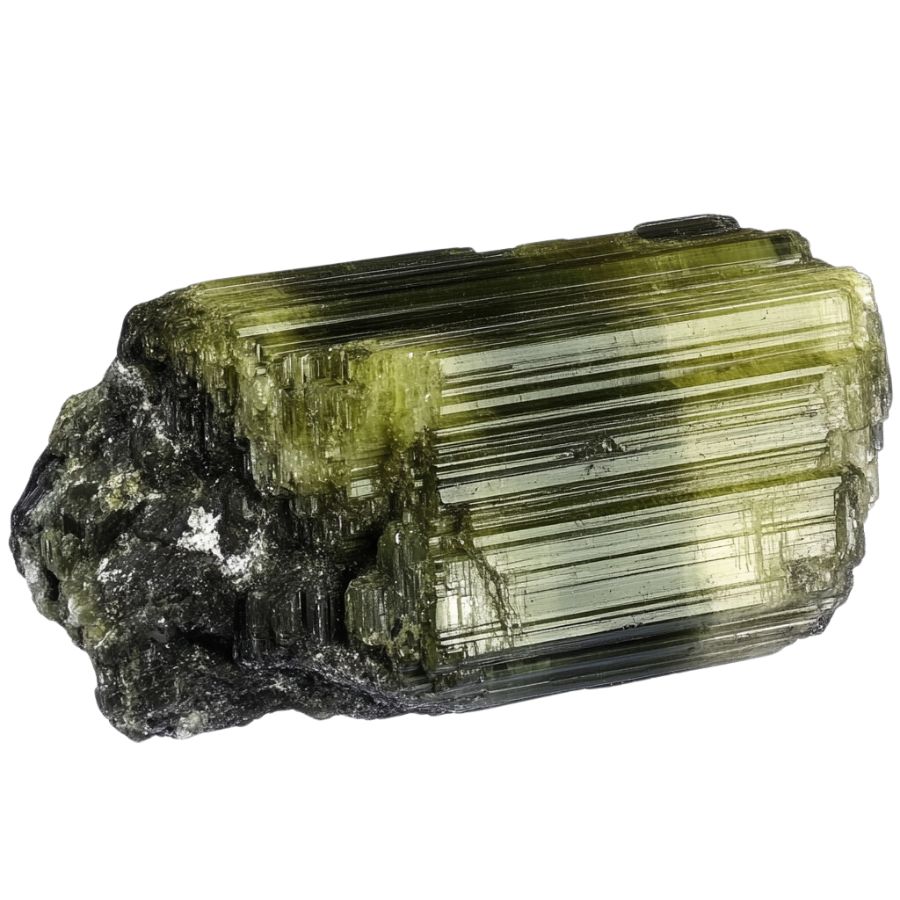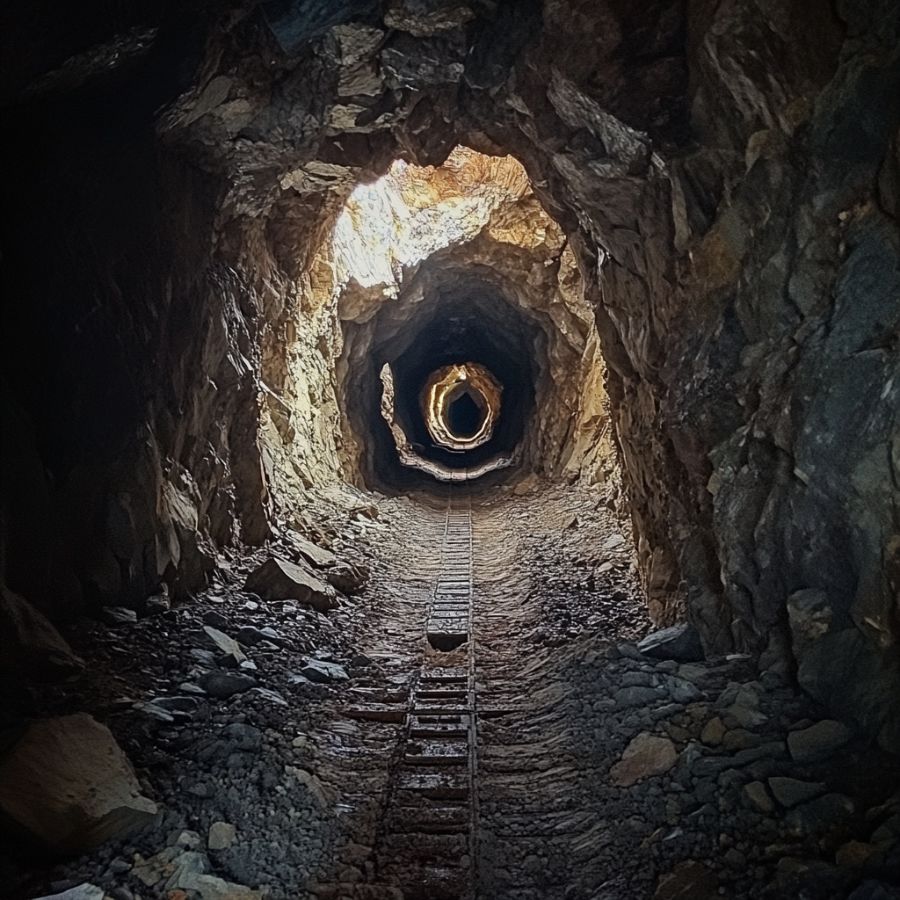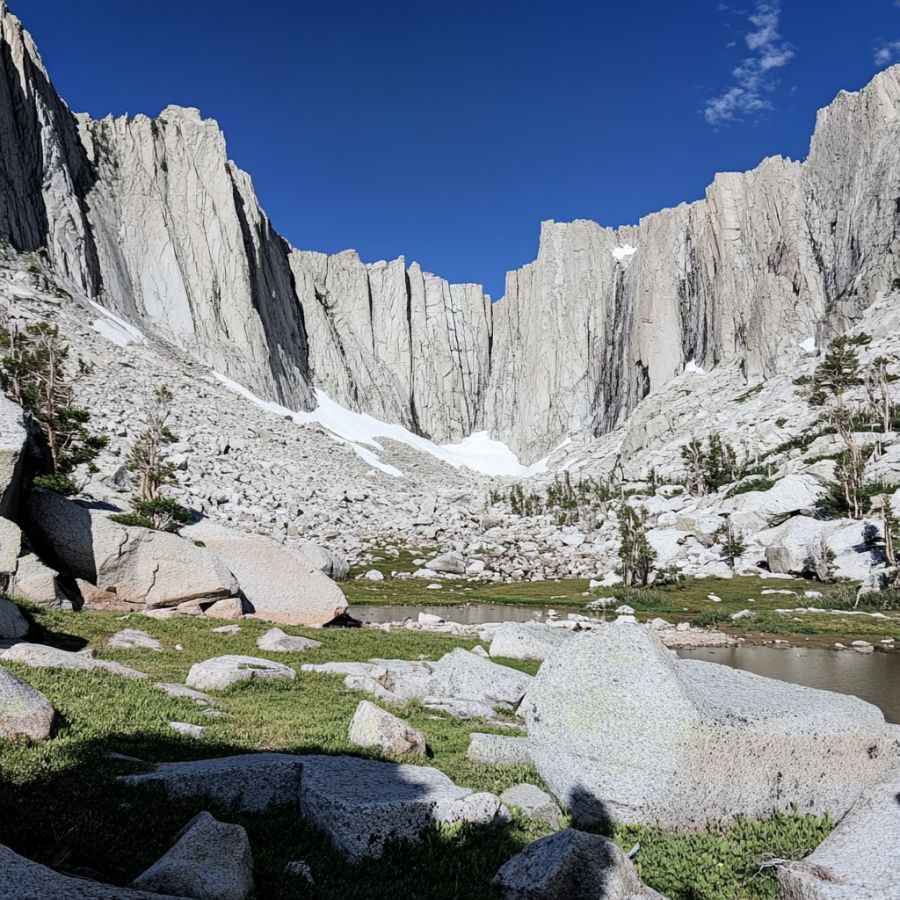Utah, a gem hunter’s paradise, stretches from the Rocky Mountains to the Colorado Plateau, bordering Idaho, Wyoming, Colorado, Arizona, and Nevada.
Avid rockhounds often struggle to find reliable tourmaline locations in this diverse landscape. Searching can be time-consuming and frustrating. But fear not!
This article reveals the best spots to discover tourmaline in Utah. We’ve done the legwork, consulting local experts and experienced collectors, to bring you a curated list of prime locations.
Save time and energy by focusing your efforts on these proven sites. Get ready to uncover stunning tourmaline specimens in Utah’s geological wonderland.
How Tourmaline Forms Here

Tourmaline forms deep underground through intense heat and pressure. It originates from hot, mineral-rich fluids that move through fractures in rocks like granite and pegmatite. As these fluids cool, the minerals within them start to crystallize, forming tourmaline.
The color of tourmaline depends on the specific minerals involved, leading to a wide range of hues including pink, red, green, and blue.
Over millions of years, these crystals grow and become the beautiful, multifaceted stones we see today. Tourmaline is prized for its variety of colors and is often used in jewelry and decorative items.
The Types Of Tourmaline
Several incredible types of Tourmaline can be found in the US as well as in our state. Each is uniquely beautiful and interesting including:
Elbaite

Elbaite is found in pink, red, green, blue, yellow, and even colorless forms. What makes elbaite special is its ability to show multiple colors in a single crystal, like the famous “watermelon” tourmaline with pink and green hues.
This gem stands out due to its complex chemical makeup, which includes lithium, sodium, and aluminum. This composition gives Elbaite its diverse color range and dichroism, allowing it to display different colors when viewed from different angles.
Elbaite has a unique place in history as the first tourmaline variety in which lithium was discovered back in 1818. Some rare types, like the neon blue Paraiba elbaite, are highly sought after by collectors and jewelers.
Schorl

Schorl is known for its deep, rich color. It typically forms long, prismatic crystals with a shiny, glass-like surface when polished. Unlike other tourmalines, schorl gets its distinctive black color from high iron concentrations.
One of Schorl’s most fascinating features is its ability to become electrically charged through heating or rubbing. When charged, it can attract or repel small particles.
This unique electrical property makes Schorl valuable in various industries. It’s used in electronics and manufacturing to control static electricity and electromagnetic interference.
Despite being less colorful than other tourmalines, schorl’s practical applications make it an important and interesting variety.
Rubellite

Rubellite stands out with its vibrant pink to red colors. The most prized ones show a pure, saturated red without any brown or orange hints. This beautiful color comes from manganese in its makeup.
One cool thing about rubellite is its double refraction. It can look like it has two different colors when you view it from different angles.
Dravite

Dravite, or Brown Tourmaline, comes in shades from dark brown to light brown-yellow. It can look a bit like Smoky Quartz, with a semi-see-through quality.
Its crystals are often needle-like or prismatic, with points at both ends. This sets it apart from other tourmalines like the darker schorl or the colorful elbaite.
What makes dravite special is its rich sodium and magnesium content. This sets it apart from other tourmalines. It was first discovered in 1883 and named after the Drava River in Slovenia.
Indicolite

Indicolite is a rare and captivating blue to blue-green stone. It’s prized for its pure, bright blue color, which is considered the rarest within the tourmaline family. The hues can range from light blue-green to deep, rich blue, often with high clarity.
What sets Indicolite apart is its unique optical effects. It shows pleochroism, appearing to change color when viewed from different angles. Some specimens also display chatoyancy, creating a “cat’s eye” effect when cut in a certain way.
Indicolite is sometimes called “Brazilian sapphire” due to its resemblance to the precious gem. However, they’re different minerals.
The increasing demand for blue tourmalines has made indicolite highly sought-after in the gemstone market, appreciated for its beauty and rarity.
Watermelon Tourmaline

Watermelon tourmaline is truly one-of-a-kind. It looks just like a slice of watermelon, with a pink or red center and a green outer layer. This unique look happens because different elements join the crystal at different times as it grows.
These crystals often form in a rounded triangle shape. They’re see-through to somewhat clear and have a glass-like shine. When cut into slices, they really do look like little watermelons!
Cat’s Eye Tourmaline

Cat’s eye tourmaline is known for its mesmerizing chatoyancy effect. This creates a bright band across the stone’s surface, resembling a cat’s eye.
This stone comes in various colors, from green to pink to brown, and is usually semi-translucent to opaque.
What makes this stone special is the perfect alignment of tiny, needle-like inclusions inside it. These scatter light in a unique way, creating that eye-catching effect. It’s quite different from other tourmalines that don’t have this feature.
Unlike other cat’s eye stones, Tourmaline offers a wider range of colors and is often more affordable.
Achroite

Achroite is a rare, colorless variety of tourmaline that looks like a drop of clear water turned to stone. It’s completely transparent, making it unique among tourmalines which usually have color. The name comes from Greek, meaning “without color.”
What’s special about achroite is that it doesn’t change color when viewed from different angles. It means the stone can be cut in many ways without losing its clarity.
Verdelite

Verdelite is known for its beautiful green color. It can range from light green to deep emerald.
One thing that makes verdelite special is that you can find big, clear crystals of it. This isn’t always easy with other gemstones.
People love using verdelite in jewelry because its rich color and interesting light effects make it a popular choice for all kinds of accessories. Each piece of verdelite is like a little piece of nature you can wear.
Paraíba Tourmaline

Paraíba Tourmaline is a rare gemstone that catches the eye with its vibrant neon blue or green color. It’s like no other tourmaline you’ve seen before. The intense glow comes from copper in the stone, making it stand out from its cousins.
This stone is one of the rarest. For every 10,000 diamonds mined, only one Paraíba tourmaline is found.
It was only discovered in the late 1980s, making it a newcomer in the gem world. But Paraíba tourmaline’s unique color and rarity quickly made it a favorite among gem lovers.
Its discovery caused quite a stir in the gem community. Even small stones can be valuable because of how rare and beautiful they are.
What Rough Tourmaline Looks Like
When you’re out looking for rough Tourmaline on your own it’s important to know what you’re looking for. But before we dive into specifically what to look for you need to make sure you understand the type of rocks and minerals you’re seeing.
DON'T MISS OUT ON ANY GREAT FINDS!
While you're out searching for Tourmaline you're going to find A LOT of other interesting rocks and minerals along the way. The last thing you want to do is toss out something really interesting or valuable. It can be easy to misidentify things without a little guidance.
We've put together a fantastic field guide that makes identifying 140 of the most interesting and valuable rocks and minerals you will find REALLY EASY. It's simple to use, really durable, and will allow you to identify just about any rock and mineral you come across. Make sure you bring it along on your hunt!
Now, back to the identification specifics:
Here are some tips to help you recognize rough tourmaline.
Look for Color Variations

Tourmaline comes in many colors, like pink, green, blue, and even black. Some pieces have multiple colors, like watermelon tourmaline, which is pink and green.
If you see these color mixes, it’s likely tourmaline. Keep an eye out for vibrant shades.
Assess the Density and Weight

Rough tourmaline is relatively heavy for its size. If you pick up a piece and it feels denser than expected, it could be tourmaline. This weight can help you confirm your find.
Examine the Crystal Structure

Tourmaline features distinctive crystal shapes, ranging from slender and elongated to chunky forms. Look for triangular cross-sections and striations on the surface, which indicate its unique growth patterns.
Check for Transparency

Some rough tourmaline can be slightly transparent. If you hold it up to the light, you might see through it a bit. This transparency can be a good sign that you have tourmaline.
A Quick Request About Collecting
Always Confirm Access and Collection Rules!
Before heading out to any of the locations on our list you need to confirm access requirements and collection rules for both public and private locations directly with the location. We haven’t personally verified every location and the access requirements and collection rules often change without notice.
Many of the locations we mention will not allow collecting but are still great places for those who love to find beautiful rocks and minerals in the wild without keeping them. We also can’t guarantee you will find anything in these locations since they are constantly changing.
Always get updated information directly from the source ahead of time to ensure responsible rockhounding. If you want even more current options it’s always a good idea to contact local rock and mineral clubs and groups
Tips on where to look
Once you get to the places we have listed below there are some things you should keep in mind when you’re searching:
Look for Sedimentary Rocks

Sedimentary rocks are great places to find tourmaline. These rocks form from layers of sand, mud, and minerals. Over time, minerals like tourmaline can get trapped.
Look in riverbeds or areas where sediment has built up. You might find small pieces or even larger crystals.
Explore Mines

Mines are great spots to find tourmaline. Many mines across the U.S. extract various gemstones, including tourmaline.
Some mines even allow visitors to search for gems themselves. Always check if they have guided tours or special digging days.
Search in Gravel Pits

Gravel pits are often overlooked, but they can be treasure troves. These pits dig deep into the earth, exposing layers of rock.
Tourmaline can be found in the gravel. Just sift through the material carefully.
The types of Tourmaline can you find around the state
Tourmaline is a fascinating mineral found in Utah, known for its wide range of colors and varieties. Two notable types of tourmaline found in the state are Rubellite and Watermelon Tourmaline.
Rubellite is a vibrant red to pink variety of elbaite tourmaline, characterized by its rich color, which can be attributed to the presence of manganese. This striking gemstone is highly sought after for jewelry due to its beauty and rarity.
Watermelon Tourmaline is another unique type that showcases a beautiful blend of colors, typically green on the outside and pink or red in the center, resembling a watermelon slice.
This bicolored effect occurs when the crystal grows in layers, allowing different colors to develop simultaneously.
Some Great Places To Start
Here are some of the better places to start looking for tourmalines in Utah:
Always Confirm Access and Collection Rules!
Before heading out to any of the locations on our list you need to confirm access requirements and collection rules for both public and private locations directly with the location. We haven’t personally verified every location and the access requirements and collection rules often change without notice.
Many of the locations we mention will not allow collecting but are still great places for those who love to find beautiful rocks and minerals in the wild without keeping them. We also can’t guarantee you will find anything in these locations since they are constantly changing.
Always get updated information directly from the source ahead of time to ensure responsible rockhounding. If you want even more current options it’s always a good idea to contact local rock and mineral clubs and groups
Long Lick Mountain

Long Lick Mountain is a 6,686-foot summit located in Beaver County. It is situated in the southwestern part of the state, specifically in the Picacho Peak area.
The mountain’s unique composition of igneous and metamorphic rocks creates an ideal environment for mineral formation.
The area’s volcanic history and tectonic activity have blessed Long Lick with diverse mineralogy, making each expedition a potential jackpot for gem enthusiasts.
Tourmaline seekers will find their treasure in pegmatite veins and pockets, often exposed by natural erosion. These mineral-rich layers are typically accessible in the lower parts of the mountain.
Beyond tourmaline, the rugged terrain offers a variety of other mineral specimens, turning a simple rock-hunting trip into an exciting geological adventure.
Queen of Sheba Mine

Nestled in the rugged Deep Creek Mountains of western Utah, the Queen of Sheba Mine in Juab County is a rockhound’s paradise. This historic site, part of the Spring Creek Mining District, boasts a rich mining legacy dating back to the late 1800s.
Rockhounds flock to this area for its remarkable variety of minerals. The Queen of Sheba Mine is particularly known for its gold and silver veins, but the real treasure for gem enthusiasts lies in its colorful tourmaline deposits.
These gems are often found embedded in pegmatite veins, which crisscross the mine’s weathered rock faces.
Explorers can search around old mining shafts and exposed outcrops for tourmaline specimens. The area’s complex geological history has created pockets where these gemstones formed, offering exciting opportunities for discovery.
Remember, the mine’s high-altitude location means the weather can change quickly, so come prepared for a true mountain adventure.
Copper Gulch

Located in the San Francisco Mountains of southwestern Utah, Copper Gulch is a treasure trove for rockhounds. This scenic valley in Beaver County sits at an elevation of 5,614 feet, offering a unique geological playground.
The area’s geology is shaped by the Cactus granodiorite stock, an Oligocene intrusion about 31 million years old. This formation created ideal conditions for mineral formation, including tourmaline.
Tourmaline enthusiasts should focus on areas with signs of past hydrothermal activity. These zones, often marked by altered rocks and mineral veins, are prime locations for finding this colorful gem.
The gulch’s rich mining history also means you might stumble upon other minerals like copper, lead, and zinc while searching for tourmaline.
Troy Prospect

The Troy Prospect is located within the Gold Hill Mining District in Tooele County, Utah. This historic mining area, located near the Utah-Nevada border in Tooele County, is a treasure trove for mineral enthusiasts.
The district’s rich geological tapestry, formed by the Ochre Mountain Limestone and Manning Canyon Formation, creates an ideal environment for tourmaline formation.
Rockhounds can explore old mine workings and tailings, where tourmaline often hides in mineralized zones within the limestone. For the best chances of finding tourmaline, focus on areas around quartz veins and pegmatite formations.
The area’s diverse mineral wealth extends beyond tourmaline, with deposits of lead, silver, copper, and gold adding to its allure. The Gold Hill Mining District’s legacy dates back to the 1860s when prospectors first discovered gold in the area.
Amasa Valley

Amasa Valley is situated in the House Range, which is in the western part of Millard County. This arid mountain region is famed for its geological wonders, including Notch Peak’s impressive vertical drop.
Tourmaline hunters will find their quarry hidden within pegmatite veins and pockets scattered throughout the valley. These colorful crystals often lurk in the more challenging terrain, rewarding those willing to venture off the beaten path.
As you explore, keep an eye out for the area’s renowned trilobite fossils – silent witnesses to the region’s prehistoric marine life.
Amasa Valley’s diverse geology offers more than just tourmaline. The area’s unique mineral tapestry reflects millions of years of Earth’s history, making each discovery a window into the past.
Places Tourmaline has been found by county
After discussing our top picks, we wanted to discuss the other places on our list. Below is a list of the additional locations where we have succeeded, along with a breakdown of each place by county.
| County | Location |
| Beaver | OK Mine |
| Beaver | Cactus Gulch |
| Beaver | Old Hickory Mine |
| Beaver | Preuss-Cactus Mine |
| Beaver | Blackbird Group |
| Beaver | North Star Mine |
| Juab | S. Hansen Drill Holes Prospect |
| San Juan | Happy Jack Mine |
| Tooele | Blue Bell Mine |
| Tooele | Calaveras Mine |
| Tooele | Clifton Area |
| Tooele | Centennial Mine |
| Tooele | North Prospect |
| Tooele | Gold Bond Mine |
| Tooele | Pole Star Mine |
| Tooele | Rex Prospect |
| Tooele | Rustler Mine |
| Tooele | Ferroan Sandstone Formation |
| Tooele | Victory No. 1 Mine |
| Tooele | Doctor Mine |


